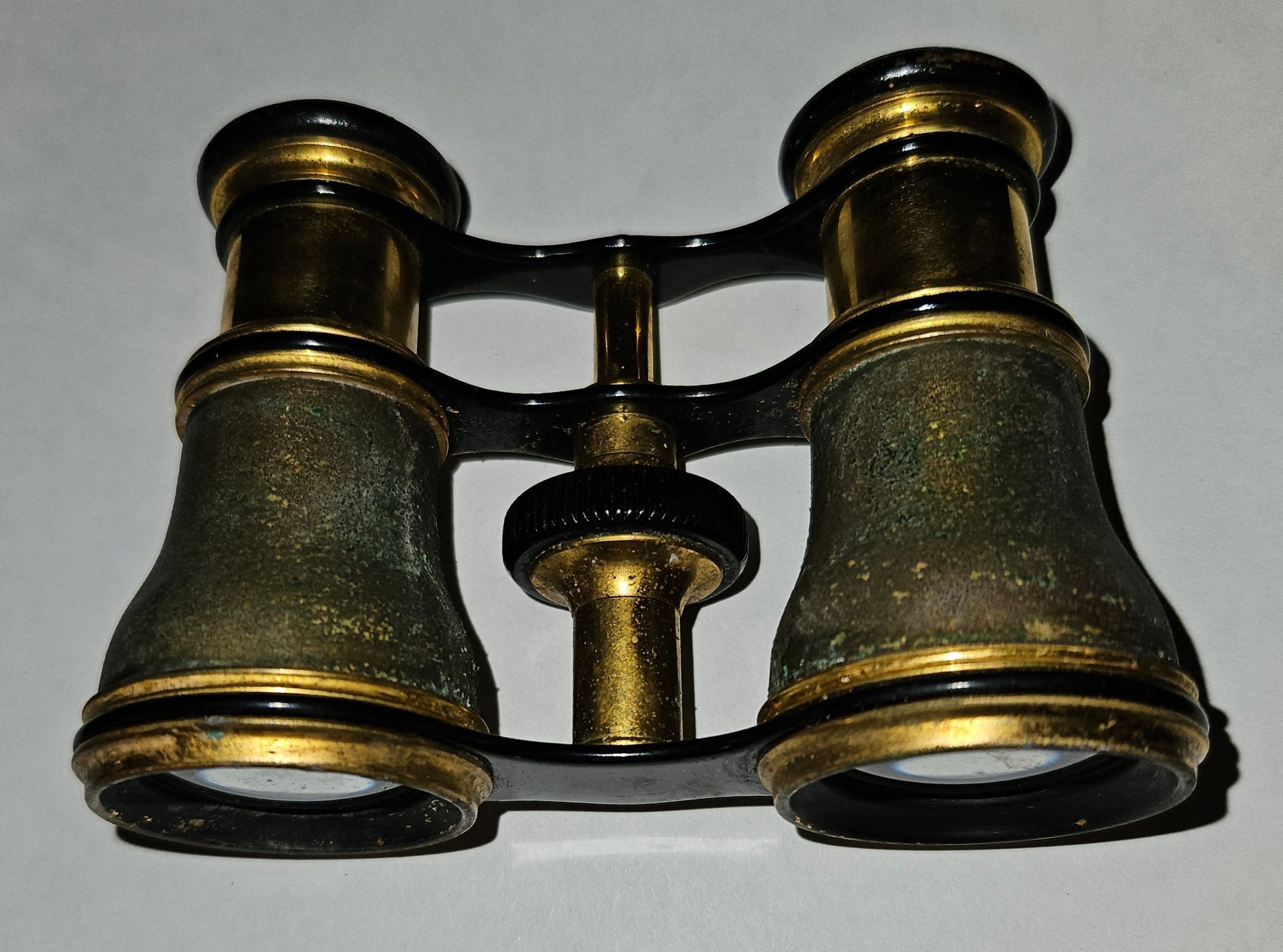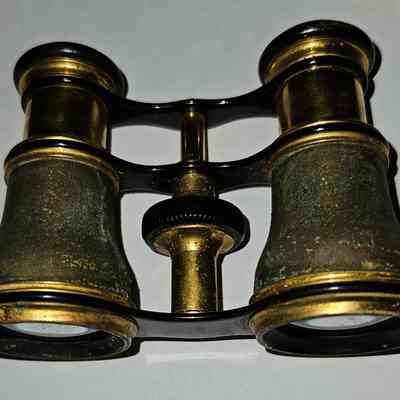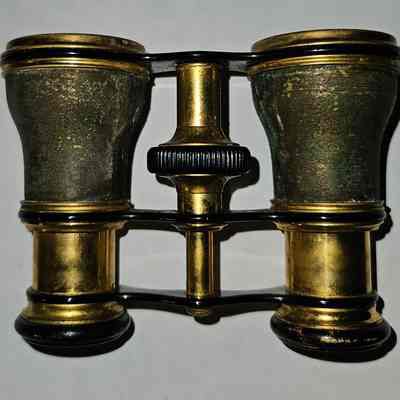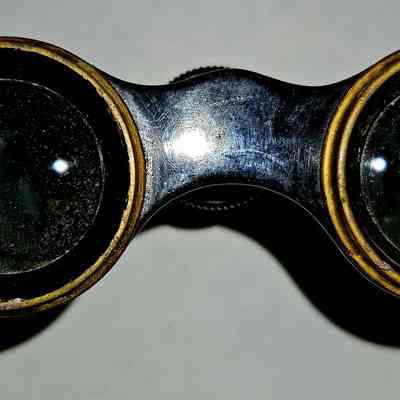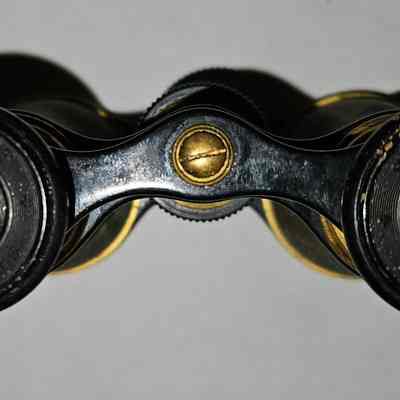Name/Title
Opera GlassesEntry/Object ID
2024.3.11Description
Brass opera glasses. Lemaire Fabt., Paris.Use
Before television, when visual entertainment was live, opera glasses were small binoculars used for watching live opera or theater.Context
The Lemaire firm was begun in 1846 in Paris, rue Oberkampf. 22 & 26 by Armand Lemaire. They produced a variety of optical apparatus including binoculars. The firm operated until 1955. Lemaire exported its goods all over the world.
Found along with textiles (mostly garments) in cellar of 151-F Pond Road in Franklin, CT. Some of the garments are marked RR. The donor believes the textiles had belonged to Marjorie Burnham Ayer Robbins, born 1897, in whose home they were found, and/or the Robbins family into which she she married. RR could have been Marjorie's second husband, Roger Robbins.
Marjorie was born in Hampden, CT, in 1897, the daughter of Frederic Augustus Burnham and Mary Eleanor [Copeland] Burnham. She attended local schools and one year at the Bay Path Institute, from which she graduated in 1917. She taught school and worked as a secretary. In 1920 she married Joseph Eugene Ayer of Franklin, CT, a farmer. Joseph was born in 1893. He and Marjorie had two children, Eugene and John. Joseph died in 1926. Marjorie operated their farm for many years, and was still an unmarried widow in 1940. Sometime after that, she married Roger Robbins. She died in Franklin in 2003 and is buried next to Joseph on the Ayer family plot in Franklin.Collection
Burnham-Ayer-Rogers CollectionMade/Created
Manufacturer
Lemaire Fabt.Time Period
20th CenturyInscription/Signature/Marks
Type
Manufacturer's markTranscription
Lemaire Fabt., ParisLanguage
FrenchLexicon
Nomenclature 4.0
Nomenclature Secondary Object Term
Glass, OperaNomenclature Primary Object Term
Device, VisionNomenclature Sub-Class
Personal Assistive ObjectsNomenclature Class
Personal GearNomenclature Category
Category 03: Personal ObjectsDimensions
Height
1 inWidth
4 inDepth
3 inMaterial
Brass, Bakelite, GlassLocation
Location
Room
Archives* Untyped Location
Main Museum BuildingCategory
StorageDate
December 1, 2024Condition
Overall Condition
GoodDate Examined
Dec 1, 2024Examined By
Eves, J.Cleanliness
Cleaned when accessionedProvenance
Provenance Detail
Found in the cellar of 151-F Pond Road, Franklin, CT, the former home of Marjorie Burnham Ayer Robbins, when the house was being cleaned out by family members prior to sale.Created By
historian@millmuseum.orgCreate Date
December 1, 2024Updated By
historian@millmuseum.orgUpdate Date
December 1, 2024